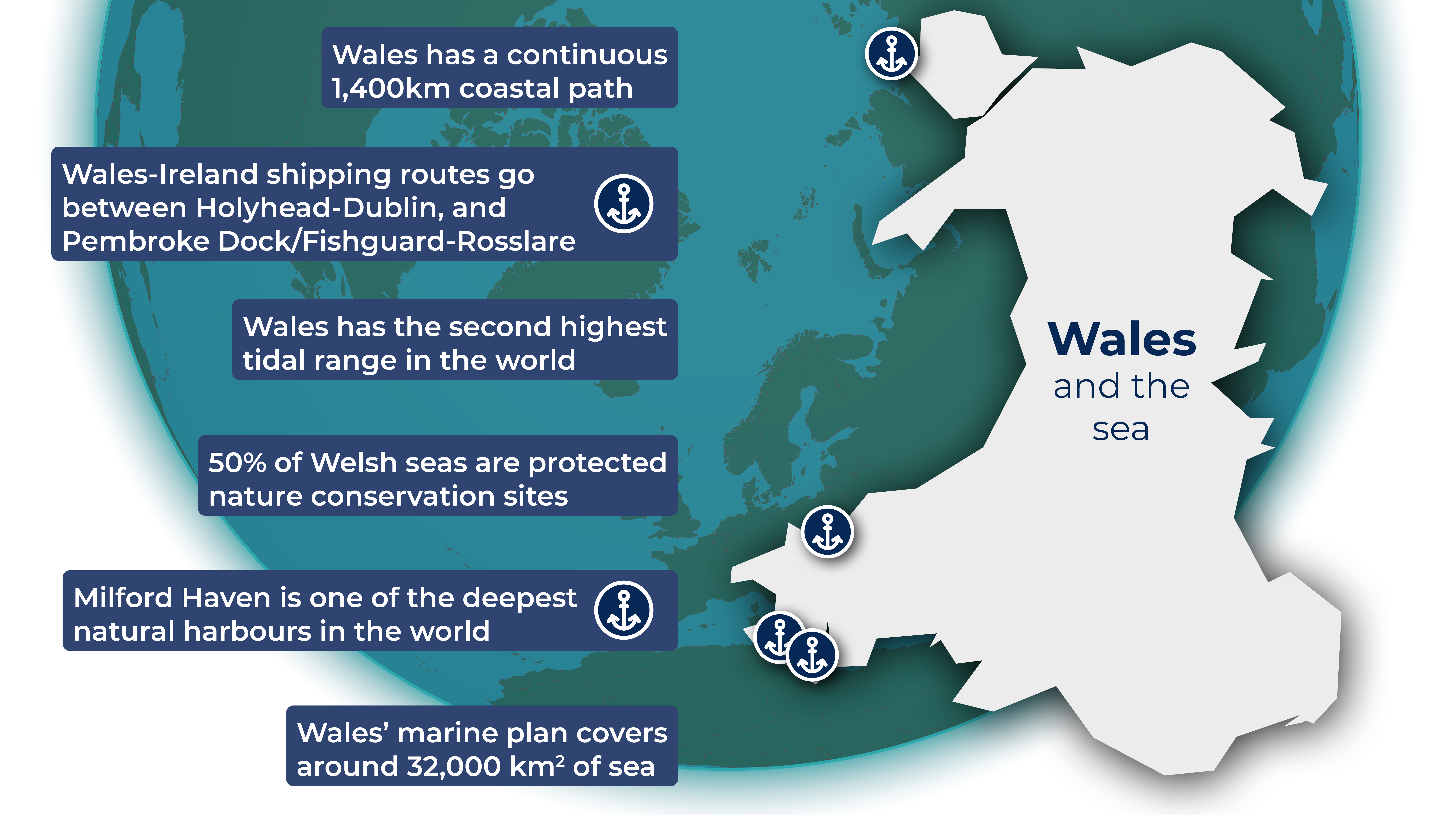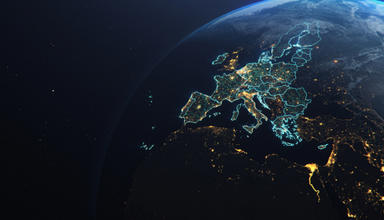On Tuesday, it’ll be all hands on deck for the future of maritime cooperation in the North Atlantic.
Leaders from Wales, the rest of Europe, and Canada will gather at the Senedd to discuss transatlantic relations, marine renewables and the green economy.
The Conference of Peripheral Maritime Regions (CPMR) brings together over 160 regions across 24 EU Member States and beyond. Together, members represent over 200 million people. Wales is the only UK member of the Atlantic Arc Commission, one of the CPMR’s six ocean region commissions. Its General Assembly will take place at the Senedd on 23 May.
As a nation steeped in maritime history, it’s no surprise that Wales is playing host.
Ahead of the summit, this article explains the CPMR and gives a basic introduction to Wales’ sea.
What does the CPMR do?
The CPMR is Europe’s leading maritime cooperation organisation.
Since its establishment in 1973, it has focused on social, economic and territorial cohesion, maritime policies and blue growth and accessibility.
The CPMR is subdivided into six geographical commissions corresponding to Europe’s maritime basins: Atlantic Arc, Baltic, Balkan and Black, Intermediterranean, Islands and the North Sea.
Wales is the only UK member of the Atlantic Arc Commission. Other members include Ireland’s Northern and Western Regional Assembly, the Basque Country and Andalucía. Québec’s government was granted associate member status in March 2023.
The agenda for 23 May includes sessions on:
- transatlantic cooperation on maritime affairs;
- cooperation on Offshore Renewable Energies in the Atlantic; and
- boosting skills for a green future.
Working documents are also available.
Wales and the CPMR
In 2017, 20 European regions signed the ‘Cardiff Declaration’ expressing their commitment to strong cooperation after Brexit.
In the CPMR’s latest annual report, the President of the Atlantic Arc Commission and President of the Basque Government, Iñigo Urkullu, (the President) describes his desire to continue “long-lasting cooperation with the Atlantic non-EU regions”.
The Commission has developed a transatlantic pilot project to do this.
Wales sits on the Commission’s Steering Group and chairs the taskforce on cooperation with non-EU regions, responsible for designing activities for the pilot project. Activities aim to enhance the role of regions in transatlantic cooperation, including for a green recovery in Atlantic territories. They’re planned to start by the end of 2023 with a budget of €790 000 for two years.
The Welsh Government’s Economy Minister, Vaughan Gething, recently addressed the European Parliament’s regional committee to set out the Welsh Government’s priorities for post-Brexit Wales-EU cooperation. The First Minister last met with the President on March 29, 2023.
Who will represent Wales?
The Welsh Government will be represented by the First Minister, the Economy Minister and its representative in Europe, Derek Vaughan.
The Senedd will be represented by the Deputy Presiding Officer, David Rees MS, the Chair of the international relations committee, Delyth Jewell MS, and Joyce Watson MS, a member of the climate change committee.
Wales and the sea
The infographic below introduces some facts about Wales and the sea.

Learn more from our publications:
- A snapshot of marine environment management explains how Wales’ marine environment is managed and summarises the Senedd’s Climate Change, Environment and Infrastructure Committee’s assessment.
- Who owns the seabed and why it matters explains the role of the Crown Estate in seabed use and development.
- What is the Welsh National Marine Plan and what does it mean for the seas around Wales? Our research briefingexplains the Welsh Government’s policies for the sustainable development of the marine plan area, approximately 32,000 km2 of sea and 2,120 km of coastline.
- Marine Protected Areas in Wales provides a background to MPAs in Wales, the different types of MPAs, the condition of sites and the management regime in place for the network.
- Blue Carbonprovides an overview of the main marine habitats that contain blue carbon, where they are and the various threats they face. Welsh seas contain seagrass, saltmarsh and seaweed blue carbon habitats, encompassing more than 99km2 of the Welsh MPA network.
Welsh maritime history
Here are just a few fascinating facts about Wales’ maritime history:
Leaders will meet in the heart of the former Tiger Bay, which handled more coal than any other port in the world in the 1880s. It’s been said the world’s first £1 million cheque was signed at the Coal Exchange building a short walk from the Senedd. By 1913, Barry had become the largest coal exporting port in the world, with Cardiff second.
In the 19th century, coal, iron and steel poured out of the south Wales valleys along the Glamorganshire Canal, down to Bute Street in Cardiff Bay, and onwards across the seas. Merthyr Tydfil, known as the “iron capital of the world”, produced cannons favoured by Admiral Horatio Nelson who visited Cyfarthfa ironworks, the largest in the world.
Captain Scott and his crew sailed out of Cardiff Bay to Antarctica on 15 June 1910, aboard the Terra Nova, hoping to become the first to reach the South Pole. Widespread sponsorship from Welsh citizens, businesses, shipowners, the Western Mail and David Lloyd George is credited with readying the voyage in time to reach the Pole in 1912.
Wales in the world
As leaders co-write the next chapter in their collective maritime stories, much has changed in our seas since the days of the industrial revolution powered by Welsh resources.
But there are remarkable similarities; of decisions made over resources, of leaders writing the future together, of charting a consequential course for us all.
Once again history will be written in Wales, in the very same place, next to the very same buildings, as in times past.
Article by Sara Moran, Senedd Research, Welsh Parliament






